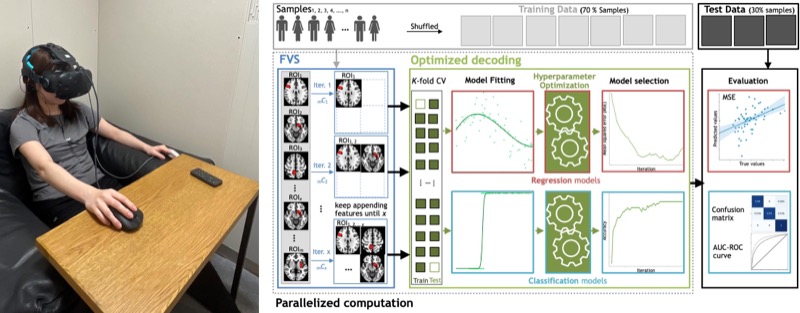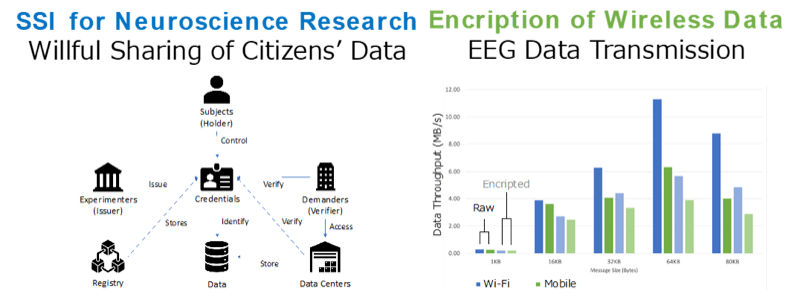Progress Report
Innovation in “Mental Capital” through Awareness Music and creation of new liberal arts7. Remote KANSEI Quantification with Wearable BIN system & Music-based Neuro-Bio-Feedback
Progress until FY2022
1. Outline of the project
With the development of wearable EEG technologies in daily life, technologies to quantify KANSEI, which has been difficult to date, are readily available. However, it is pivotal to establish convenient yet reliable neurophysiological assessment technology for sound and music in daily life supported by brain-interoception network (BIN) monitoring. In this theme, we will advance the basic research to the fundamental technologies to achieve social implementation. First, we will develop a multimodal neuro-physiological KANSEI interface with wearable EEGs and physiological monitoring devices and identify indices to measure and visualize the BIN in real-time. With advancing informatics, concurrent and remote data collection from the citizens is expected to foster the quantitative evaluation of positive KANSEI.

Together with these neuroscientific basis, we will foster to minimize negative KANSEI. The development of Neuro-Bio Feedback technology would lead to the creation of the Awareness Music/Sound that optimizes the BIN of individuals in real-time with sounds and music.
2. Outcome so far
1) “Development of Sensory Visualization Technology Using Wearable BIN Measurement”
We have established a BIN monitoring setting that simultaneously monitors multimodal physiological indices together with EEGs (Fig. left). We have also released a new methodology to improve the decoding accuracy of existing machine learning on multivariate neural data (Fig. right).
2) “Development of simultaneous multimodal BIN data collection and remote visualization of sensitivity”
As a trustable platform for curating personal, multimodal neurophysiological information obtained from citizens in the near future, we developed a self-sovereign authentication (SSI) system that securely establishes authentication between data providers and their users (Ding, Sato & Machizawa, 2022), it was awarded the Best Paper Award at the IEEE Software Defined Systems.


3) “Statistical Learning and neural underpinnings on Musical perception, recognition and appreciation"
We covertly learn acoustic notes and our brain implicitly acquire statistical rules behind the musical notes. Our research on statistical learning revealed the neural underpinnings of developmental dyslexia associated with both perception and attentional processes.

4) “BIN assessments across generations and species"
We are bridging the gap from basic research to real-world applications and promoting the technical commonality of BIN measurement methods between generations (adults to children) and between species (humans to rodents).
3. Future plans
The decoding method is expected to be applied to practical use in the real-world with guaranteed fidelity, serving a foundation for reliable application of neural functions obtained in basic research in the general public. With interindividual differences on BIN in mind, we will identify indices that can be utilized in the real world with neuroscientific model of KANSEI and decoding of multimodal neurophysiological information. It is expected to enhance "mental capital" and feedback in the real world based on reliable markers found in basic brain science research through BIN measurements
(MACHIZAWA Maro, Hiroshima University).